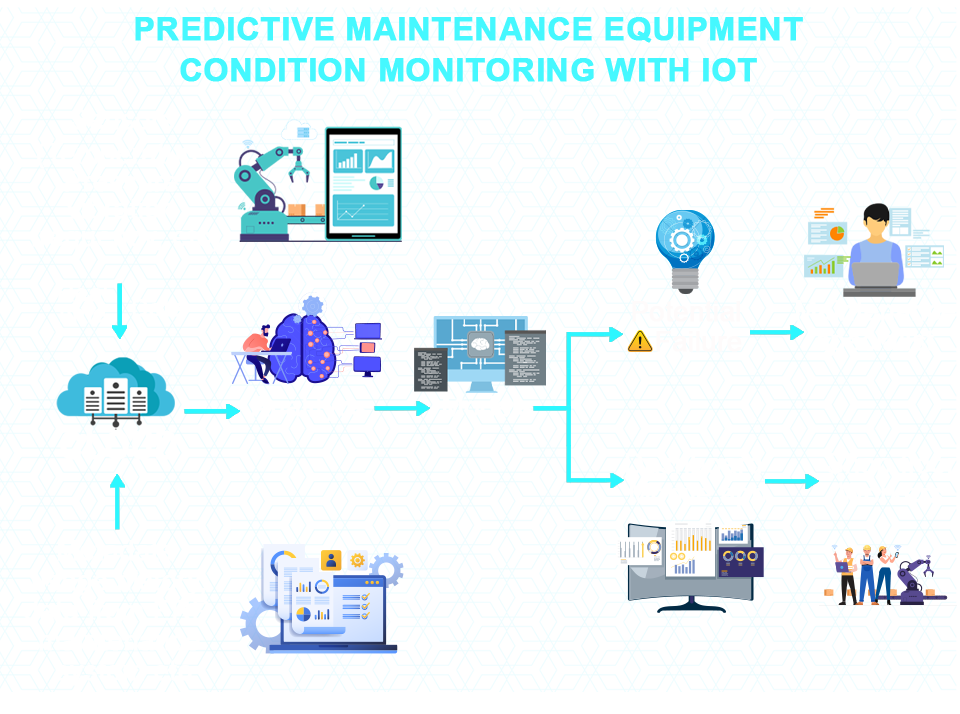Industrial Automation & Predictive Maintenance
Welcome back, enthusiasts of innovation! Today, we embark on an exploration of a captivating realm that’s reshaping the landscape of industries – the fusion of Artificial Intelligence (AI) and the Internet of Things (IoT) in industrial automation, with a special spotlight on predictive maintenance. If you’re intrigued by the notion of smart technology composing seamless operations, you’re in for a treat. Let’s delve into this transformative synergy.
Imagine a realm where machines not only collaborate flawlessly but also anticipate when they require a momentary pause to evade abrupt malfunctions. That’s precisely what we’re delving into today – the incorporation of AI and IoT, revolutionizing industrial automation and ensuring smooth operations.
Understanding AI, IoT, and Industrial Automation
AI gives machines with cognitive abilities akin to human thinking and learning, while IoT facilitates the interconnectivity of everyday objects over the internet, facilitating data exchange and insights sharing.
When AI and IoT converge within the domain of industrial automation, it’s similar to giving machines with a creative intellect and a lightning-fast communication network. This synergy enables industries to operate with extraordinary efficiency and intelligence.’
Advantages of AI, IoT, and Predictive Maintenance
Let’s explain why the incorporation of AI, IoT, and predictive maintenance announcers a paradigm shift:
Cost Savings:
AI’s predictive prowess enables accurate anticipation of maintenance needs, averting unnecessary expenditures associated with premature replacements. A McKinsey report suggests a potential 10% reduction in annual maintenance costs.
Downtime Reduction:
By prognosticating equipment failures, AI facilitates planned maintenance during scheduled downtime, mitigating the risk of unexpected breakdowns. Research indicates a consequential 20% to 50% reduction in downtime.
Extended Asset Lifespan:
AI-driven maintenance preemptively detects and addresses issues, thereby elongating the lifespan of equipment and assets by 20% to 40%, as per a report by MDPI.
Enhanced Equipment Efficiency
Through continual monitoring and analysis of equipment data, AI optimizes operating conditions, potentially enhancing overall equipment efficiency by 15%, according to studies.
Energy Savings:
AI identifies inefficient operating conditions, optimizing energy usage and yielding energy savings of approximately 20%, as evidenced by studies conducted by Springer Link, Elsevier, and others.

Inventory Optimization:
Predictive maintenance streamlines spare parts inventory, potentially reducing inventory carrying costs by 20% to 30%, while ensuring critical parts availability, as highlighted in various International Journals.
Safety Improvements:
Predictive maintenance precludes potential equipment failures that could precipitate accidents, thereby potentially reducing safety incidents by 15% to 30%, based on research findings.
Operational Efficiency Enhancement:
AI-driven maintenance scheduling and resource allocation could yield a 15% to 20% improvement in overall operational efficiency, as posited by studies.
It’s essential to acknowledge that precise figures may vary contingent upon the industry, equipment type, and specific AI technologies employed.
In conclusion, the integration of AI and IoT in industrial automation, with a focus on predictive maintenance, presents a vista akin to possessing a crystal ball that scores seamless industrial operations, averting unforeseen disruptions.
If you found this discourse enlightening, don’t hesitate to show your appreciation by sharing it with your companions. Until our next rendezvous, maintain your curiosity and continue exploring the remarkable realm of AI, IoT, and predictive maintenance.
For further assistance, visit our channel and refer the video named The integration of AI and IoT or click the link.



Can you be more specific about the content of your article? After reading it, I still have some doubts. Hope you can help me.
Thanks for sharing. I read many of your blog posts, cool, your blog is very good.
Thanks for sharing. I read many of your blog posts, cool, your blog is very good.